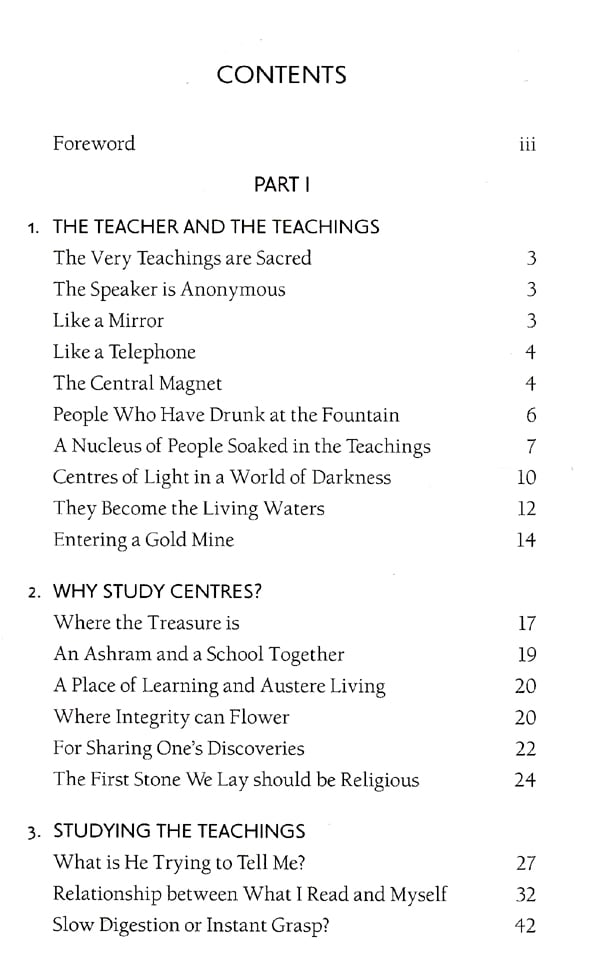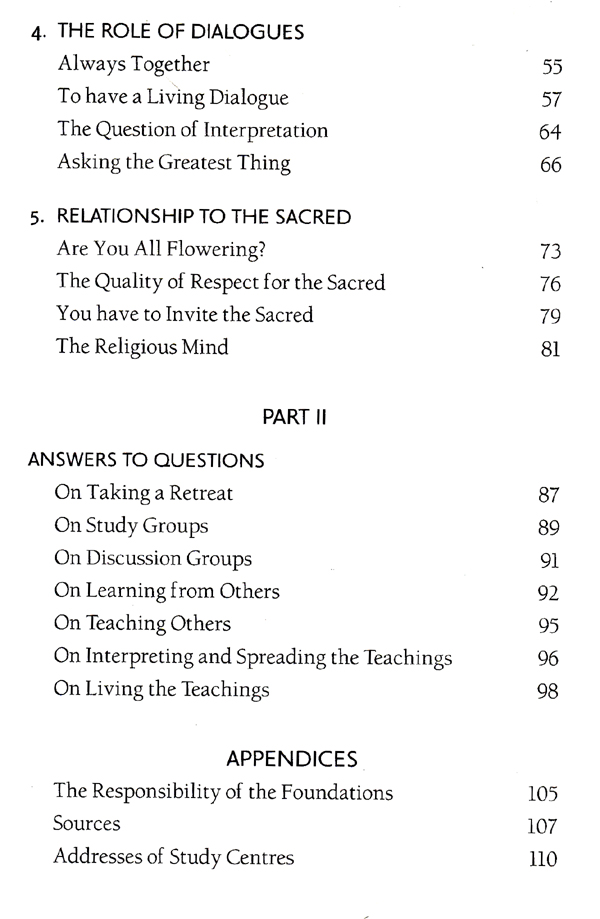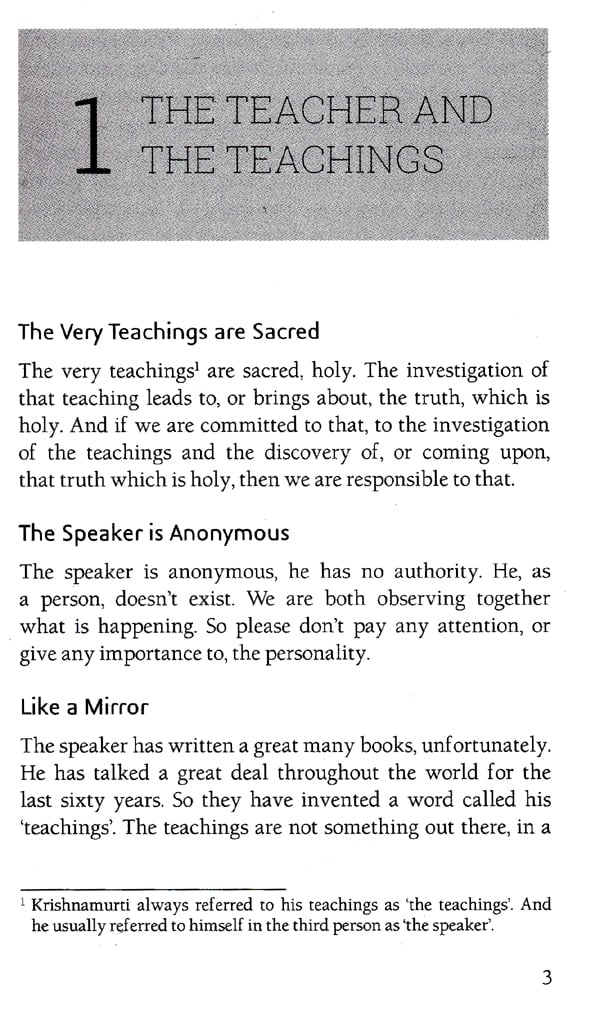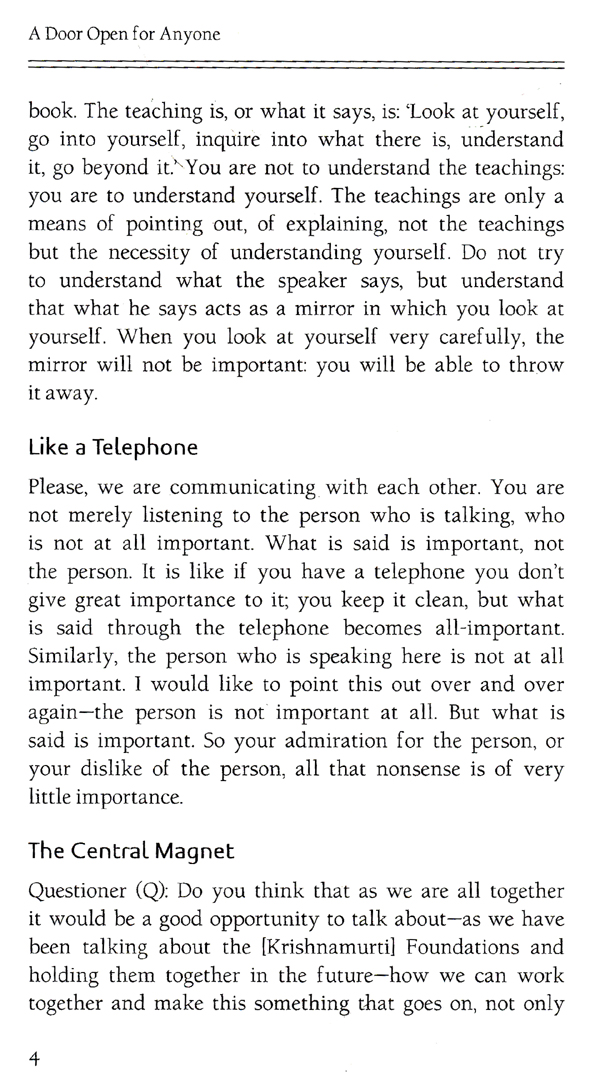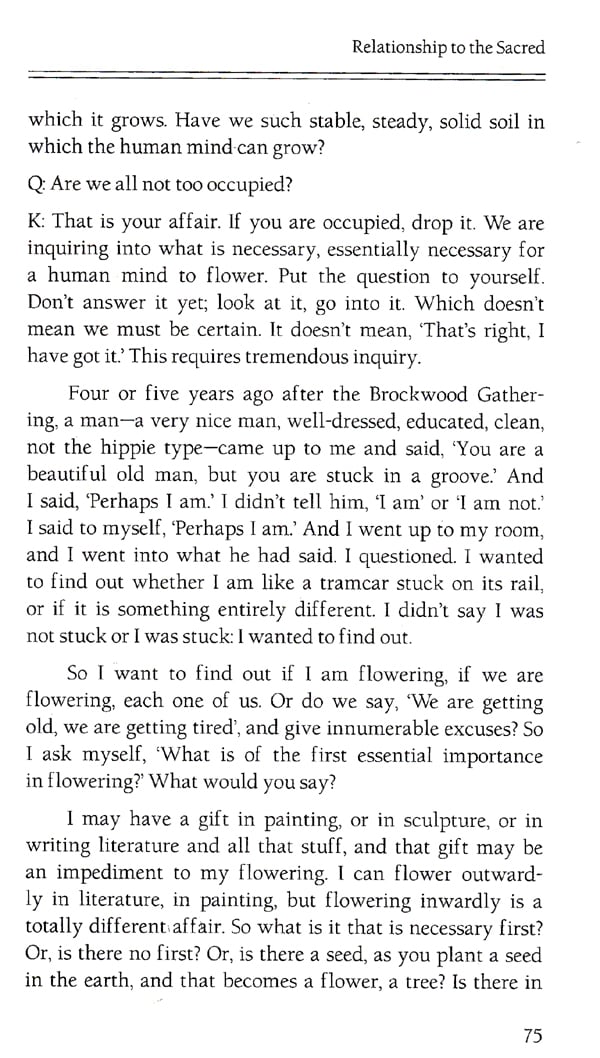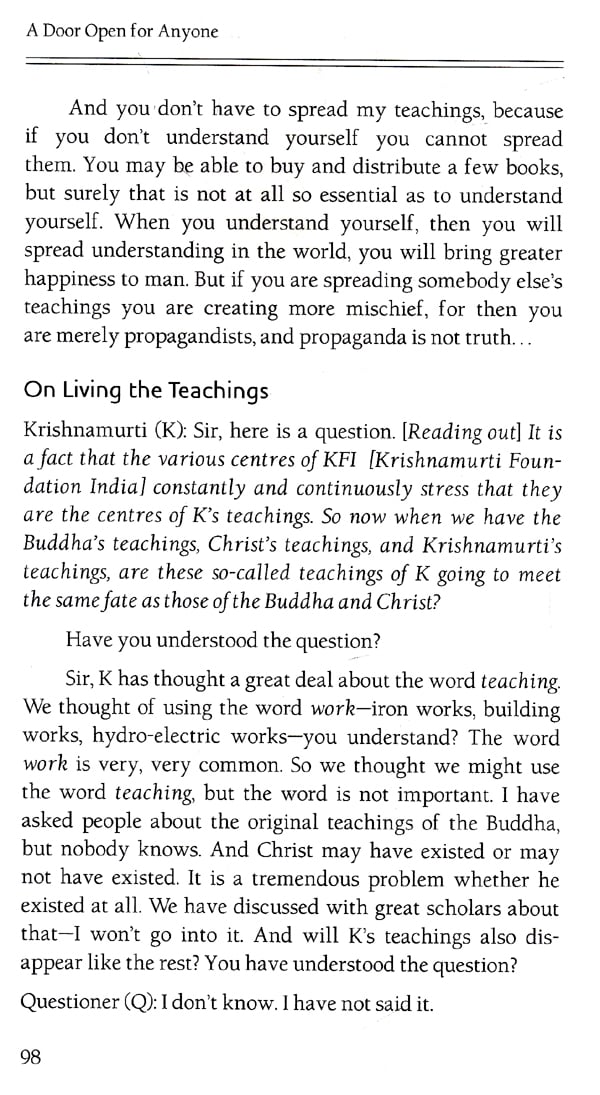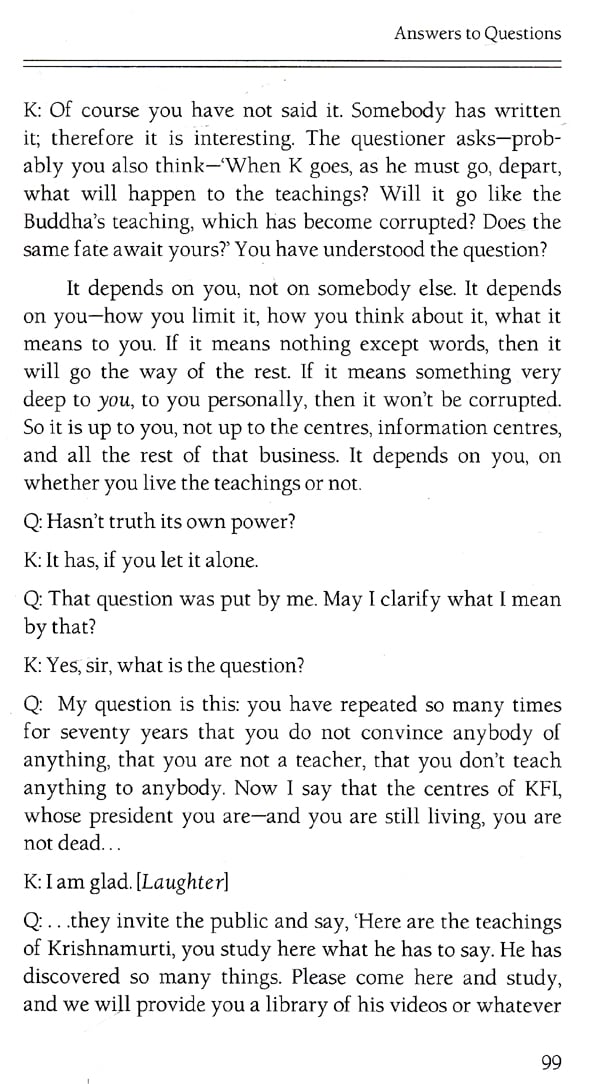
A Door Open for Anyone
Book Specification
| Item Code: | NAY453 |
| Author: | J. Krishnamurti |
| Publisher: | Krishnamuriti Foundation India |
| Language: | English |
| Edition: | 2018 |
| ISBN: | 9788187326960 |
| Pages: | 136 (16 Color Illustrations) |
| Cover: | PAPERBACK |
| Other Details | 8.50 X 5.50 inch |
| Weight | 200 gm |
Book Description
During the last decade of his life, Krishnamurti urged the Krishnamurti Foundations in India, England, and America to start study centres for serious adults, as he felt that most people in the modern world, being caught in their routine of office and home, do not have the leisure to delve into his teachings and take stock of their lives. However, he made it clear that studying his teachings is neither an intellectual exercise nor a theological pursuit, its sole aim being to bring about a deep, religious transformation in oneself. His vision of a study centre, his concern over its aesthetics and its inwardness, the responsibility of the hosts and the guests, the quality of dialogues, the nature of the religious mind, all these and many more form the contents of this book, which is of special relevance to those visiting these study centres.
J. Krishnamurti (1895 - 1986) is regarded as one of the greatest philosophers and religious teachers of all time. For more than sixty years he travelled the world over, giving talks and holding dialogues, not as a guru but as a friend. His teachings are not based on book knowledge and theories, and therefore they communicate directly to anyone seeking answers to the present world crisis as well as to the eternal problems of human existence.
When Krishnamurti started schools in India in the early 1930s, he said in no uncertain terms that their main intention was not just to impart academic knowledge, but to sow in children the seeds of self-knowledge. Though he refused to spell out an educational philosophy, he went about passionately establishing and nurturing schools in India, England, and America till the end of his life. However, during the last decade of his life, he turned to doing something specific for grown-up people, enjoining on his close friends the need to start Study Centres for those who had been listening to him for long. He discussed with them the question of finding a suit-able name for such places, a name that would communicate the spirit of their intention. He toyed with several names: adult centre, ashrama, modern ashram, place of learning, and so on. But he insisted on one thing-the study of his teachings is neither an intellectual exercise, as in an academic institution, nor a theological pursuit, as in a religious organization; divorced from life and a spirit of inquiry, the former would lead to aridity and the latter to bigotry.
Over the decades, as his teachings flowered and took on innumerable hues and shades, Krishnamurti began to state explicitly that he was leaving behind a 'sacred treasure', 'a mine where there is immense gold', 'a well-spring that can never go dry'. Dismissing all suggestions that his teachings were only for the elite few, he insisted that it was for all by virtue of the f act that they were human beings. Drawing out the implications of his own statement, he made it clear that those who had come together out of their own seriousness should be soaked in the teachings, intellectually and otherwise, so that by the depth of their own understanding and quality of life they transmit it to others. 'If you want to spread these teachings, live them, and by your own life you will communicate', he had said as early as 1947.
**Contents and Sample Pages**
